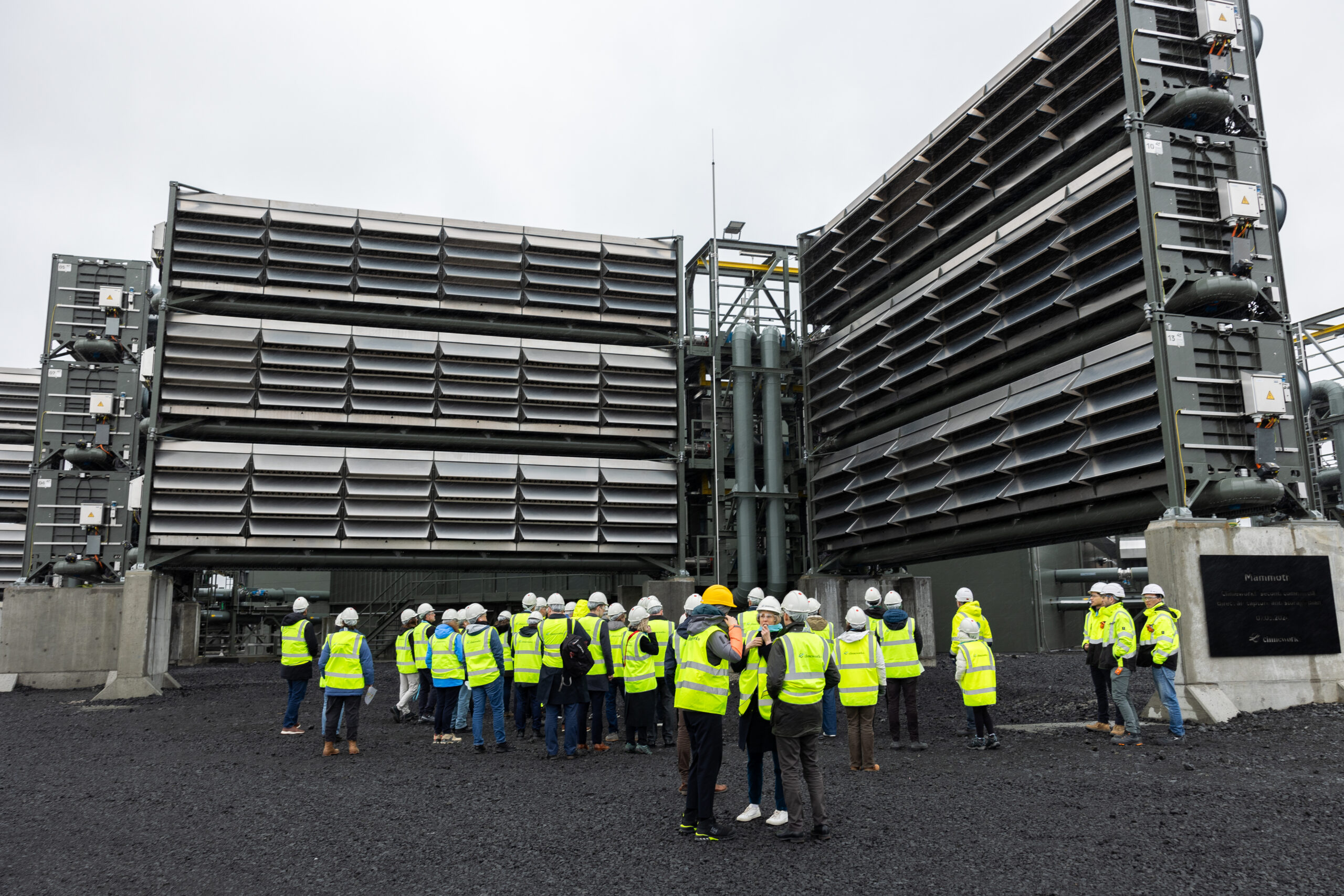Carbon removal is the process of pulling CO2 out of the atmosphere using technological and biological approaches
That’s a very simple definition for a very complex process. So let’s dive into the details. Carbon dioxide removal, CDR for short, is the process of taking existing CO2 out of the air and storing it for a long time in rocks, vegetation, the ocean, or products. There are technologies that can help us do this, but there are also biological methods — trees do it every day. At Carbon180, when we say CDR, we mean the deliberate process of removing carbon in a way that’s high quality, permanent, and just. There are a number of pathways available to make that happen.
Carbon removal isn’t an excuse to keep polluting. We need to cut emissions now.
While there’s widespread agreement today that we need to remove carbon from the atmosphere, some are concerned that this may slow efforts to decarbonize. So we want to be clear: Carbon removal isn’t an excuse to keep emitting. We need to remove carbon in parallel with massive reductions in emissions across the entire economy. Carbon removal will need to be a true complement to efforts to stop emissions and end our reliance on fossil fuels.

We need to remove a lot of carbon — not just quickly, but well
Unlike reductions, only carbon removal can bring us into net-negative territory — and that’s where we need to be. Experts recognize the importance of CDR and are already factoring carbon removal in as a critical piece of our climate response. In 2018, the UN warned that even in the most optimistic scenarios, restricting global temperature rise to 2ºC would be nearly impossible without accelerating solutions for removing what’s already in the atmosphere. We need to decarbonize the entire economy, and pull carbon out of the atmosphere in parallel.
But speed and scale aren’t the only objectives. We can’t create a carbon removal field that perpetuates the same injustices that got us to this point; we need a fundamentally new system shaped by and for the people affected most, enabling healthy, thriving communities for current and future generations.
Carbon removal can accelerate the pace of reductions and reverse the emissions causing the climate impacts we feel today. But carbon removal can only succeed if we stop emitting as soon as possible — and it’s never a replacement for decarbonization.
Erin BurnsExecutive Director
What are the pathways to carbon removal today?
A challenge of this scale demands a wide range of solutions. Today, the carbon removal field is nascent, but it’s growing fast. We already have a number of promising technologies and approaches at our disposal.
-
Biomass carbon removal and storage
Often referred to as BiCRS, this process uses biomass like plants and algae to remove carbon from the atmosphere and store it in living ecosystems, products, and underground.
-
Direct air capture
DAC, as it’s known, is one of the leading carbon removal technologies today. Most DAC plants use giant fans to capture CO2, so that it can be compressed and then stored for the long haul.
-
Enhanced rock weathering
By breaking down rocks into tiny particles and dispersing those over agricultural lands, we can take carbon out of the atmosphere and benefit our soils, waterways, and oceans.
-
Forest carbon removal
Forests are ready-made carbon removal machines. Investing in afforestation, reforestation, restoration, agroforestry, and forest management practices can put these superpowers to work.
-
Ocean carbon removal
Ocean carbon removal takes CO2 from the surface of the ocean and locks it away as stable forms of carbon or deep in the ocean.
-
Soil carbon removal
Carbon is naturally stored in soils where it nourishes plants and crops. Several land management practices can increase soil carbon while bringing benefits to producers.
-
Storage and utilization
How we remove carbon is one thing; what we do with it is another. We have a growing number of options, from geologic storage deep underground to new technologies repurposing carbon for commercial use.
Carbon removal past, present, and future
Carbon removal is a new and exciting field, but it’s operating within a landscape where climate solutions haven’t always lived up to their promise. The history of climate action is a slow-moving and biased one that has disproportionately harmed BIPOC and socioeconomically disadvantaged communities. By scaling carbon removal in a way that’s not only durable but just, we have the chance to change that. As we work in close collaboration with those same communities, we can reimagine these systems and structures so that we’re building a future where every person and ecosystem can thrive, together.
We don’t just face legacy challenges, though. We also need to expand our pathways of removal, increase our storage capacity, lower costs, deploy solutions widely, and, of course, assess their impact once implemented.
As a fairly nascent field, maturing quickly is a must. There’s broad consensus that we need more fundamental research and demonstration projects, as well as incentives to drive supply and demand, and better tools for monitoring, reporting and verification (MRV). At the same time, we’ll need a movement of political leaders, community organizers, nonprofits, startups, investors, and the general public working together to make a high-quality, carbon-removing future our reality.
Our Initiatives
Tools and resources from partners and experts
- Read: “Carbon Dioxide Removal Primer”
- Read: Roads to Removal: Options for Carbon Dioxide Removal, an analysis of CDR potential across the US
- Read: IPCC’s “Carbon Dioxide Removal” infographic
- Read: Heatmap’s “The Dawn of a New Carbon Removal Industry”
- Track: CDR.fyi’s Leaderboard, CDR Map, and Purchase Calculator
- Listen: “The Carbon Removal Show”
- Listen: “The Carbon Curve”
- Play: “The Road to 10 Gigatons,” the carbon removal scale up game
- Study: Climate Science’s “Undo Climate Change” course
- Watch: Vox’s “The tricky plan to pull CO2 out of the air”















